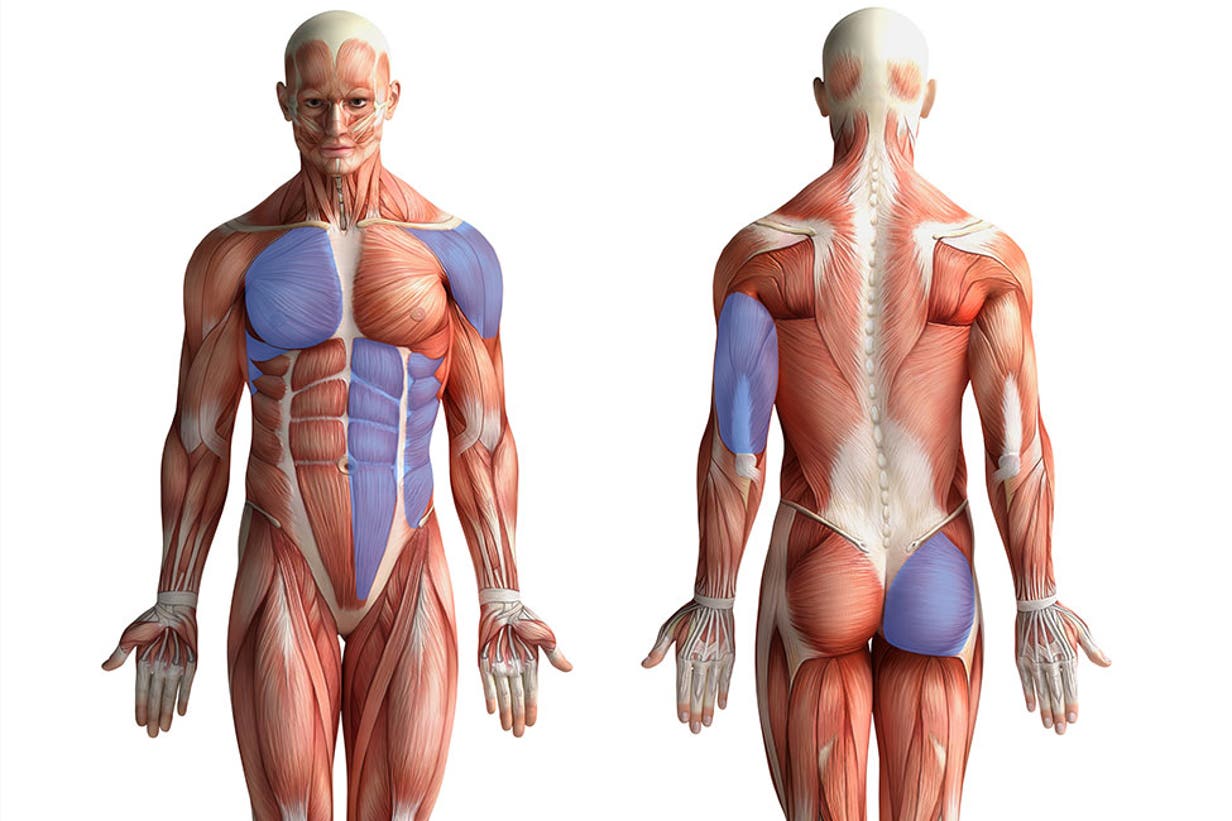Have you ever wondered what exact muscles are worked during a well-executed pushup? It’s definitely not just your chest and triceps doing all the work. Pushups require the help of many important, and potentially unexpected muscles. Read on and find out what a pushup anatomically looks like, and why Freeletics pushups are slightly different.
What are pushups?
The term ‘pushup’ stems from the simple description of the movement being performed: the act of pushing yourself up from the ground. So how exactly is it done? In the starting position, lie on your chest and stomach, with your arms bent and palms flat on the floor alongside the chest – your elbows should be facing backwards. Then, lift your whole body by “pushing away the ground” until your arms are completely extended. In a controlled movement, lower your body back down until your chest touches the floor again. Throughout the movement, your shoulders, hips, and heels should form a straight line – as if you‘re holding a plank.

The anatomy of the pushup
Which muscles are involved when performing a pushup? First of all, let‘s take a look at the major shoulder girdle muscles: the pectoralis major muscle (large chest muscle) is the most – let’s say – obvious muscle that is worked throughout the movement of a pushup. The main function of the pectoralis major is the adduction of the arm back to the torso – which basically means moving your arm back towards your chest, keeping it close to the body. Although this is the main one, there are many more muscles within the shoulder girdle that work together to perform a pushup. So, what muscles do push ups work. See the muscles here:
- pectoralis minor muscle (small chest muscle)
- serratus anterior muscle
- deltoideus muscle (shoulder muscle)
Besides these, the so-called antigravity muscles (red muscles) in the shoulder girdle are also involved to keep the shoulder, as well as the shoulder blade, in the right position. This is important, as it guarantees a good power transmission. Power transmission means that the force you create from hands, to arms, up to your chest and torso will be transferred efficiently. In case of bad shoulder positioning, there will be a lack of transfer of the created force.
When looking at the upper extremities, the triceps brachii muscle (triceps) is the second most obvious muscle worked when performing a pushup. It consists of three different heads that are responsible for the extension of the elbow joint when straightening the arm.
And we continue, with the core and lower extremities. Within the core, we have the erector spinae muscle (back muscles attached to the spine), the rectus abdominis muscle (also known as sixpack), the obliquus externus abdominis (obliques) as well as the interior abdominal muscles obliquus internus abdominis muscle and transversus abdominis muscle, which holds the spine in a stable and neutral position during a pushup. In addition to these muscles, the glutaeus maximus muscle (gluteus) is responsible for holding the hips in place, and stops them from falling forwards. An engaged gluteus also prevents the spine from dropping to create a hollow back.
Pushups in Freeletics
At Freeletics, we’re all about technique and movement quality. When performing a pushup, your elbows should always face backwards and stay close to your body. Why? Because this puts your shoulders in a stable, natural and healthy position, therefore lowering the chances of an injury occurring. If your arms are spread out to the side, this puts a huge pressure on the tissue structure as well as the ligaments and shoulder joint. But aren’t these kind of pushups harder? While this may be true, safety should always come first. Overtime the more you practice, the more strength you will build and the easier pushups will become. So remember: always keep your elbows close to your body.
Another Freeletics fact: Ever wondered why we want your chest to touch the ground with every repetition? The reason for this is that it’s easier to make every repetition count since everyone will have the same range of motion.
Let’s recap
Yes, pushups primarily work the large chest muscles as well as the triceps. But, keep in mind that there are many more muscles involved, making the pushup a great total body exercise.